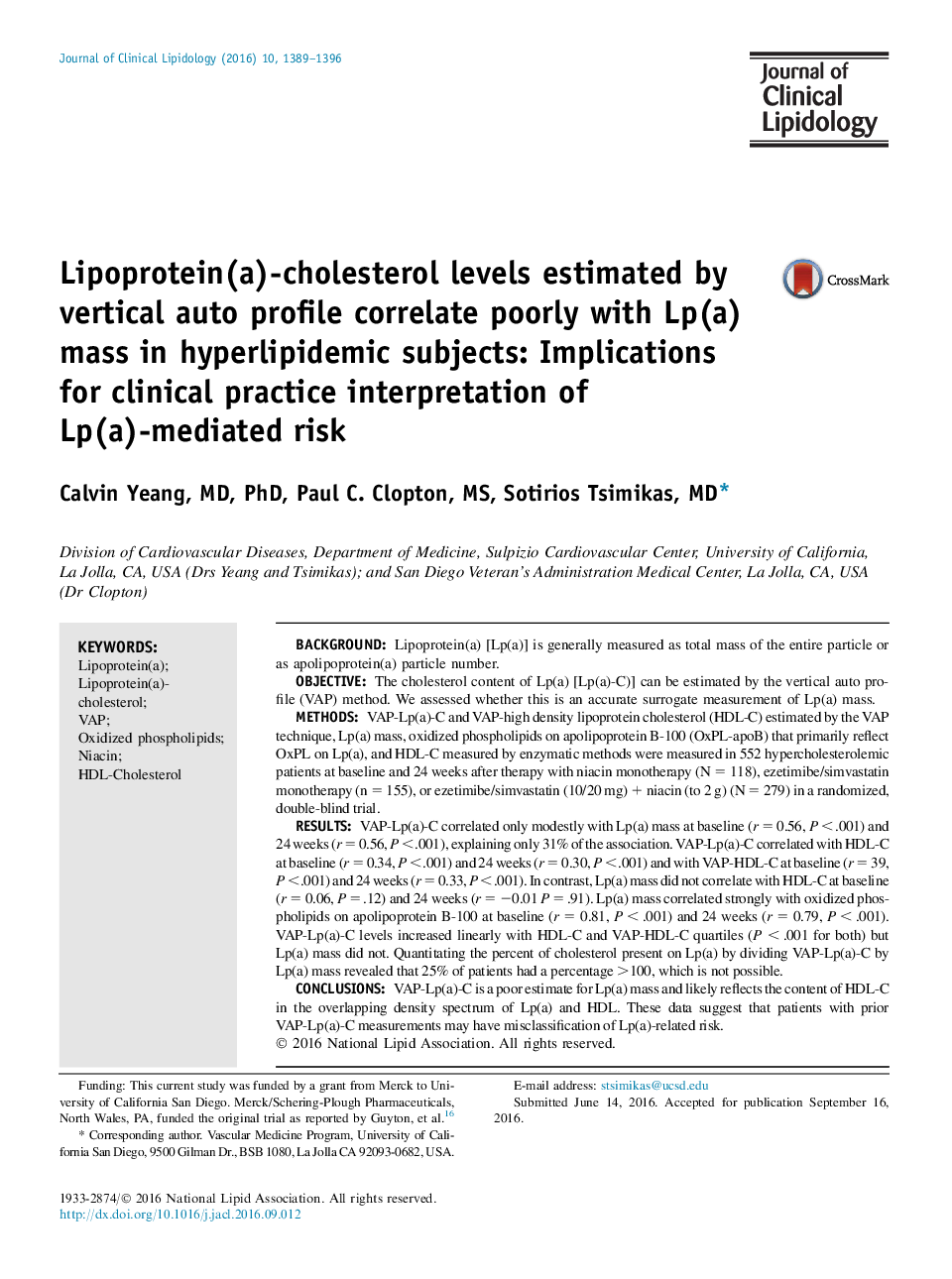| Article ID | Journal | Published Year | Pages | File Type |
|---|---|---|---|---|
| 5985127 | Journal of Clinical Lipidology | 2016 | 8 Pages |
â¢Vertical auto profile (VAP)-Lp(a)-C correlates only modestly with Lp(a) mass.â¢VAP-Lp(a)-C rises linearly with HDL-C quartiles, whereas Lp(a) mass does not.â¢VAP may erroneously detect HDL-C when estimating Lp(a)-C due to overlapping densities.â¢A significant number of patients with VAP-Lp(a)-C may have had their Lp(a) risk misclassified.â¢Consideration should be given for repeat measurement of Lp(a) with a validated assay.
BackgroundLipoprotein(a) [Lp(a)] is generally measured as total mass of the entire particle or as apolipoprotein(a) particle number.ObjectiveThe cholesterol content of Lp(a) [Lp(a)-C)] can be estimated by the vertical auto profile (VAP) method. We assessed whether this is an accurate surrogate measurement of Lp(a) mass.MethodsVAP-Lp(a)-C and VAP-high density lipoprotein cholesterol (HDL-C) estimated by the VAP technique, Lp(a) mass, oxidized phospholipids on apolipoprotein B-100 (OxPL-apoB) that primarily reflect OxPL on Lp(a), and HDL-C measured by enzymatic methods were measured in 552 hypercholesterolemic patients at baseline and 24 weeks after therapy with niacin monotherapy (N = 118), ezetimibe/simvastatin monotherapy (n = 155), or ezetimibe/simvastatin (10/20 mg) + niacin (to 2 g) (N = 279) in a randomized, double-blind trial.ResultsVAP-Lp(a)-C correlated only modestly with Lp(a) mass at baseline (r = 0.56, P < .001) and 24 weeks (r = 0.56, P < .001), explaining only 31% of the association. VAP-Lp(a)-C correlated with HDL-C at baseline (r = 0.34, P < .001) and 24 weeks (r = 0.30, P < .001) and with VAP-HDL-C at baseline (r = 39, P < .001) and 24 weeks (r = 0.33, P < .001). In contrast, Lp(a) mass did not correlate with HDL-C at baseline (r = 0.06, P = .12) and 24 weeks (r = â0.01 P = .91). Lp(a) mass correlated strongly with oxidized phospholipids on apolipoprotein B-100 at baseline (r = 0.81, P < .001) and 24 weeks (r = 0.79, P < .001). VAP-Lp(a)-C levels increased linearly with HDL-C and VAP-HDL-C quartiles (P < .001 for both) but Lp(a) mass did not. Quantitating the percent of cholesterol present on Lp(a) by dividing VAP-Lp(a)-C by Lp(a) mass revealed that 25% of patients had a percentage >100, which is not possible.ConclusionsVAP-Lp(a)-C is a poor estimate for Lp(a) mass and likely reflects the content of HDL-C in the overlapping density spectrum of Lp(a) and HDL. These data suggest that patients with prior VAP-Lp(a)-C measurements may have misclassification of Lp(a)-related risk.
